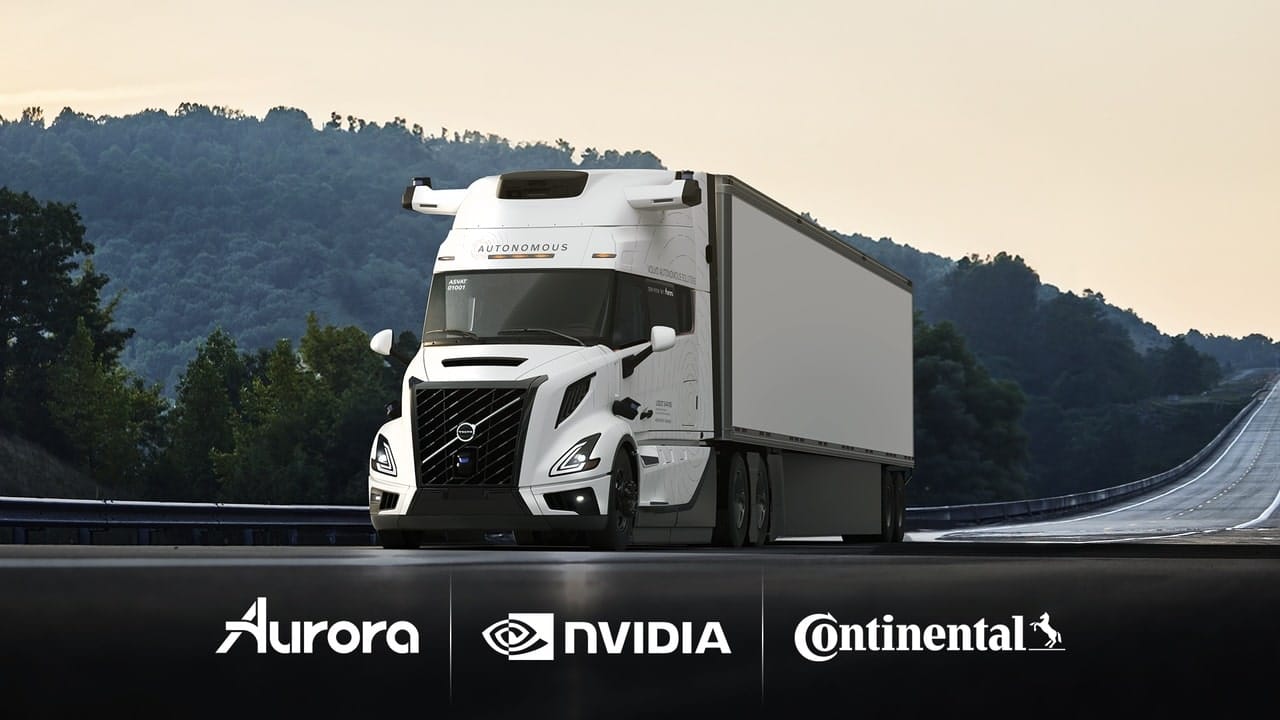Toyota, Aurora, and Continental join NVIDIA’s growing list of partners at CES 2025
At CES 2025, NVIDIA reaffirmed its position as a leader in developing advanced mobility technologies, showcasing a series of strategic partnerships and products designed to transform the automotive industry. From platforms for autonomous vehicles to advanced simulation tools, the company demonstrated how its technology is driving advancements in autonomous driving and driver assistance.
NVIDIA DRIVE Thor: The brain behind autonomous mobility
The centerpiece of NVIDIA’s automotive innovations is DRIVE Thor, a system on chip (SoCA SoC, short for Security Operations Center…) based on the NVIDIA Blackwell architecture, offering performance of 1,000 teraflops. This SoC is designed to manage generative AI tasks, language models, and vision, allowing autonomous vehicles to understand and react to their environment efficiently.
Aurora, Continental, and NVIDIA announced a long-term partnership to implement autonomous trucks at scale, using the Aurora Driver integrated with DRIVE Thor. Continental aims to commence mass production of these trucks in 2027.
Global adoption of NVIDIA DRIVE Orin
While DRIVE Thor marks the future, DRIVE Orin, Thor’s predecessor, remains a widely used solution for advanced driver assistance systems (ADAS). This system, capable of performing 254 trillion operations per second, is found in vehicles from leading manufacturers like Toyota, which will develop its next-generation vehicles on this platform.
Among the DRIVE Orin-based models showcased at CES are:
- Zeekr Mix and Zeekr 001, which will also adopt DRIVE Thor in future developments.
- Volvo EX90, a software-defined electric SUV.
- Lucid Air and Rivian R1S, vehicles that integrate advanced safety and performance technologies.
Key partnerships to advance autonomous driving
NVIDIA collaborates with a broad ecosystem of partners to advance autonomous driving. Among them:
- Foretellix: Utilizes the APIAn API, short for “Application Programming Interface,”… of NVIDIA Omniverse Sensor RTX to conduct accurate physical simulations of sensors, enhancing the validation of autonomous systems.
- Uber: Combines its driving data with the NVIDIA Cosmos platform to train more robust and effective AI models.
- Wayve and Waabi: Implement Cosmos to develop and test complex driving scenarios, including edge cases.
Cosmos and physical AI simulation
The recently unveiled NVIDIA Cosmos platform offers advanced tools for generating realistic synthetic data and training AI models for robots and autonomous vehicles. This solution enables:
- Simulating thousands of driving scenarios in a short time.
- Generating data to enhance the safety and effectiveness of autonomous systems.
- Integrating with NVIDIA Omniverse to create high-fidelity virtual environments.
Safety as a priority
NVIDIA also highlighted advancements in safety certification. Its DRIVE Hyperion platform has received approvals from TÜV SÜD and TÜV Rheinland, establishing new standards in the safety of autonomous vehicles. Additionally, the company launched the DRIVE AI Systems Inspection Lab, which helps partners meet rigorous safety and cybersecurityCybersecurity solutions are essential in the digital age… requirements.
The future of autonomous mobility
With its gaze set on the future, NVIDIA presented a series of tools designed to accelerate the adoption of autonomous vehicles. Among the standout innovations is Project DIGITS, a compact supercomputer that brings the power of advanced AI within reach of developers and businesses.
Jensen Huang, founder and CEO of NVIDIA, summed up the significance of these advancements: “The revolution of autonomous vehicles is already here. NVIDIA is leading this transformation with decades of experience in automotive computing and safety, reshaping a multi-trillion-dollar industry.”
With strategic partnerships and advanced solutions, NVIDIA continues to set the pace for innovation in mobility, positioning itself as a key player in building the future of autonomous driving and automotive technology.
References: Nvidia News 1 and 2.

